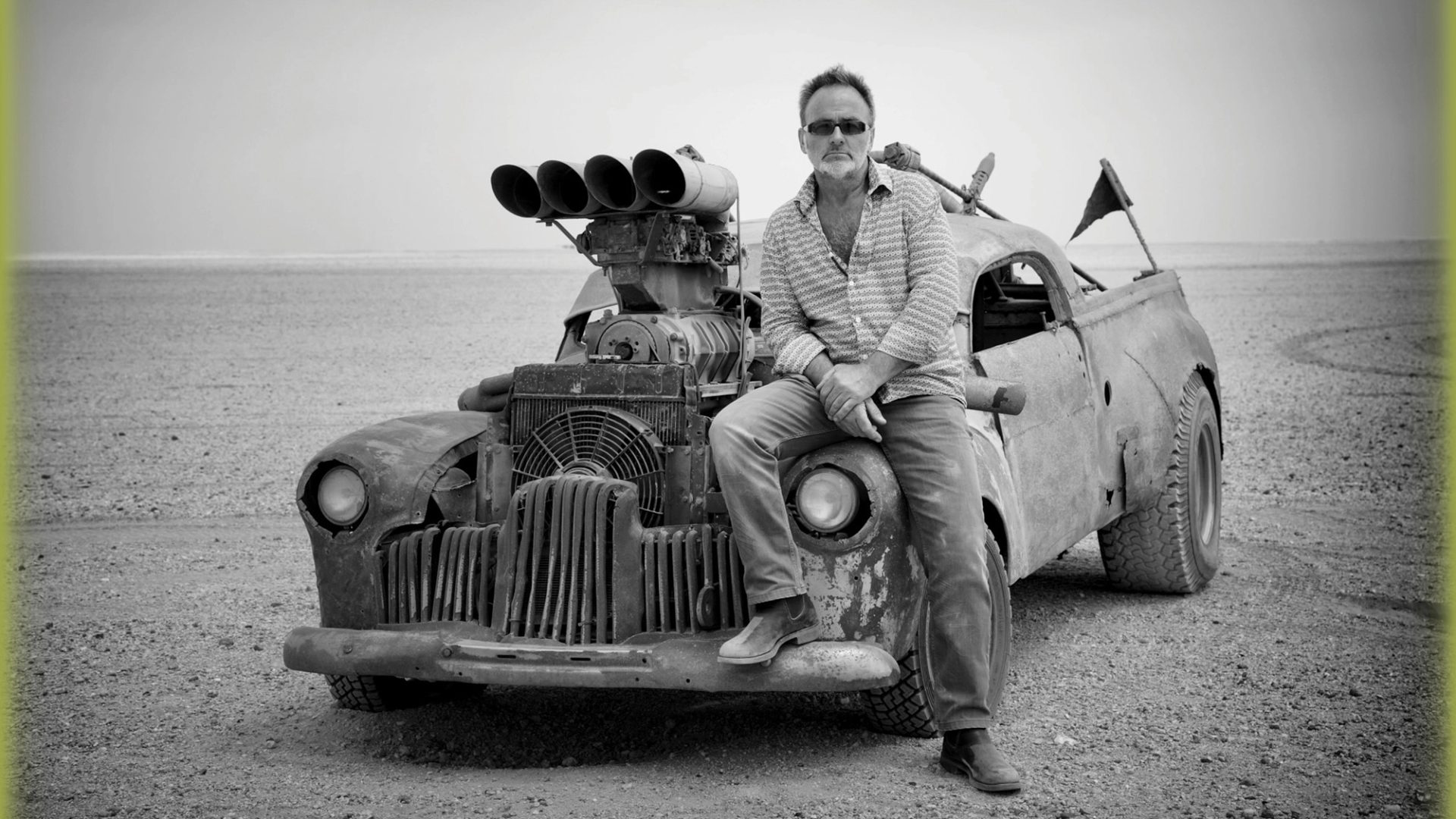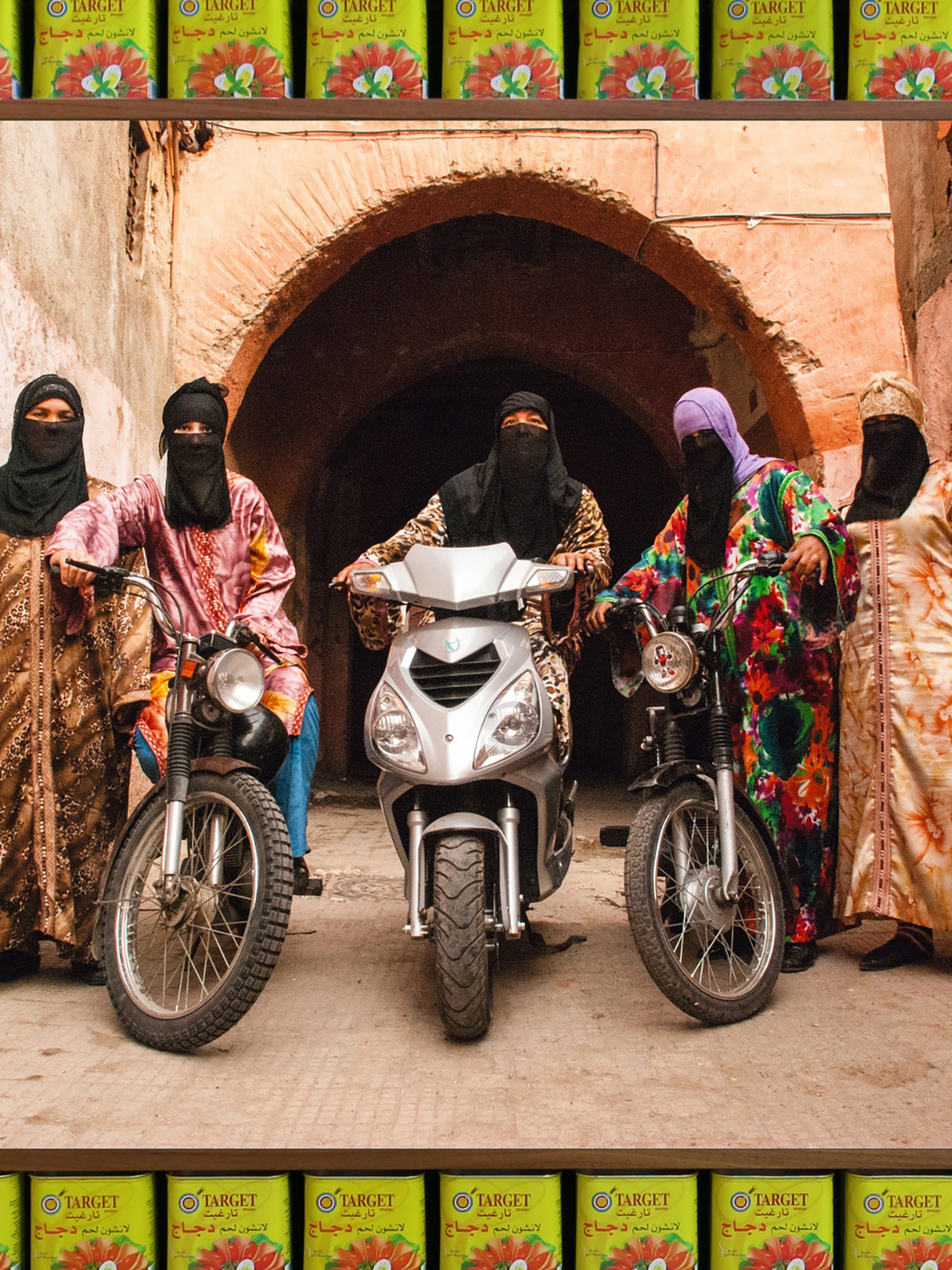Hassan Hajjaj: Leaning into Cliché

Hassan Hajjaj is a Moroccan-British artist and designer who uses his dual cultural background to drive a rich and varied practice that encompasses photography, film, fashion and product design. His work has been said to evidence a Hip Hop swagger and edge, and while he readily admits to the ‘chaotic, noisy’ aspect of his imagery, clothing and furniture designs, he insists his is a tactic of amplifying cliché in order to disarm it.
Dividing his time between London and Marrakesh, Hajjaj’s work features in the permanent collections of the British Museum, the Brooklyn Museum, l’Institut du monde arabe (Paris), the Museum of Contemporary Art, Los Angeles and the Guggenheim Abu Dhabi, among others. In 2020, Hajjaj was commissioned by Vogue to photograph Billie Eilish, dressed in Hajjaj’s clothing label Andy Wahloo.
In advance of his Maximalist Identities talk as part of Sydney Design Week 2024 – themed ‘In Between Worlds’ – Hassan Hajjaj spoke with Stephen Todd about pushing the boundaries of art, design and cultural commentary and championing local perspectives through social encounters and community-building.
‘Museums, galleries, ‘culture’ were never in my comfort zone. Now, after 30 years, it’s great that I can have my friends hanging with me in the museum and people getting high on it.’


Stephen Todd Hassan, you were born and raised in a quiet Moroccan village, but your teenage years were spent in North London. What was that experience like?
Hassan Hajjaj I moved with my family from Morocco to London when I was 12 and grew up during the time of Margaret Thatcher when things were tough for working-class kids, especially the children of immigrants. But the culture, music and fashion scenes were so incredibly energetic and vibrant throughout my teen and young adult years.
ST That energy manifested in your first creative endeavour – a clothing brand called RAP – in the early 1980s.
HH Yes, it stood for ‘Real Artistic People’ and it was about designing and selling products that riffed off big brands and their famous logos. Even as a kid, I was aware that these luxury houses weren’t designing for me and my friends, so the idea of taking their brands and subverting them with ‘wrong’ colours and patterns and materials enabled us to engage with these symbols in a new way.
ST When did you decide to re-engage with your North African roots?
HH In the mid 1990s or so I started going back to Morocco with the aim of exploring my origins. I was born in the fishing village of Larache which is on the northern tip of Morocco looking across to Spain. By comparison, inland and almost five hours south [by car], Marrakesh is a bustling international city. So, you have traditional Morocco and a very contemporary edge rubbing up against one another which creates a unique creative frisson. You see a donkey one second and a woman passing in a pair of the latest Louis Vuitton stilettos the next. I like that mix, that ‘between worlds’ aspect to the place, and in a sense my work just goes with that flow. Eventually, I bought an old riad [traditional house] in the Marrakesh Medina and started dividing my time between the two cultures.
ST How did your expatriation at a young age to England inflect your understanding of your origins?
HH I think London gave me a different point of view of my country, and of how people see my country. I knew if the subject was, let’s say, a girl on a motorbike, if I turned up the contrast – visual as well as cultural – people would look at the image and take in the information differently. Sure, my photographs are chaotic, noisy, with a lot of punchy colour, but I try to highlight the less clichéd aspect of life in Marrakesh at the same time as leaning into those clichés.
ST And therein lies the nuance of your work, be that photography, fashion or design.
HH I’m not trained in any of those areas, but I enjoy harnessing them to express my view of the world. After starting out with clothing, in the 1990s I began turning objects I’d find in the street into tables, seats, lamps and so on and then I’d insert my photographs into those settings. Then I began designing fabrics that would become backdrops for my photographs, or that I would turn into clothes – right down to socks! – and accessories like sunglasses that my sitters would wear for their portraits. This way, I was able to control the whole of the image, from concept to final print. And this, I believe, makes for the strong, almost fearless identity of the work. I’m probably 35 years in the game now, and it feels like I am constantly adding layers – literally but also emotionally and in terms of meaning – to the images.


ST Can you elaborate a bit on that idea of ‘highlighting the less clichéd aspect of life in Marrakesh at the same time as leaning into those clichés’?
HH Taking the girls on bikes as an example: people outside of Marrakesh are surprised to see images of veiled women on bikes despite the fact this is the way of commuting for all people in the narrow streets of the Medina. So, while the assumption is often that these are tough women from Marrakesh, they are in fact ordinary mothers, workers and so forth. And then I called some of these early photographs ‘Gang of Marrakesh’ and the series is called Kesh Angels, inspired by the gang Hells Angels and Kesh being short for Marrakesh, which adds another layer again.
ST Are your subjects people you know, or are you doing street casting of passers-by?
HH My images began by focusing on people I grew up with and who inspire me. Then it became friends of friends and friends of friends of friends to the point that, over more than 30 years of practice I have accumulated literally thousands of images of people from many different cultures. I meet people, get an understanding of their country, the traditions, the culture. It keeps me going at the same time as requiring a lot of energy. I'm constantly pushing myself to the limit.
ST How does your styling of your subjects affect what you want to convey of them?
HH The styling part is really a collaboration between the sitter and myself. I try as much as I can to design specific outfits for specific people.The idea is playfulness and that the sitters will have fun, so that’s very present in the design. But I always give options, and when a sitter has got a strong style of their own, I let them wear their own clothes, just adding a few accessories like sunglasses and socks. The idea is that I offer them a platform to have fun, perform and let go of their seriousness if any.
ST What’s the difference between shooting subjects that you choose from your own network and creating commissioned portraiture of the likes of Billie Eilish or Cardi B?
HH Of course, it’s different in that you’re being paid to create images of global celebrities for commercial purposes. But actually, they’re coming into my world because they admire something or things about that world. So, I just look at them as human beings and welcome them in.
ST The idea of ‘framing’ is important to your approach. The way you set up an impromptu studio by marking out space with vibrant fabric, for instance. But also the way you literally frame your images with canned food and other everyday consumer goods.
HH In a way, it’s about creating a link to traditional Arabic art with its very repeated non-figurative motifs but updating that with a contemporary edge. It was also about countering a kind of snobbism in the contemporary art world back when I started that didn’t consider photography quite up to par. I recalled going into museums and looking at oil paintings from the 1600s and 1700s which were all in these over-the-top gold frames. I remember thinking, the particular frame is built for the particular painting and will stay with it no matter how many times it changes hands. I thought to ironically ‘elevate’ my images by constructing frames from everyday grocery items – which have a highly decorative aspect, especially when assembled in repeating series.
I found along the way it had an unintended effect – originally, anyway: it’s been great because it breaks all barriers. People see Coca-Cola or Louis Vuitton or other well-known brands and are not just drawn in but given a level of comfort through recognition. Thinking about it, I believe that’s an underlying current running through all my work. I’m from council flats in London. I came out of school aged 15 with zero qualifications. So, museums, galleries, ‘culture’ were never in my comfort zone. Now, after 30 years, it’s great that I can have my friends hanging with me in the museum and people getting high on it.





















